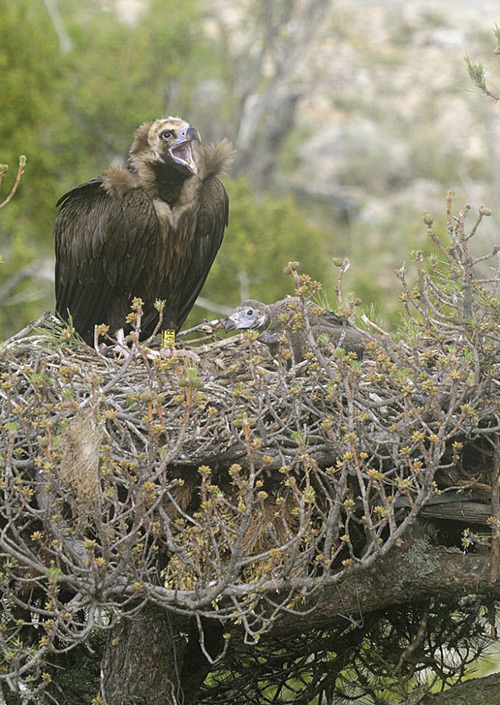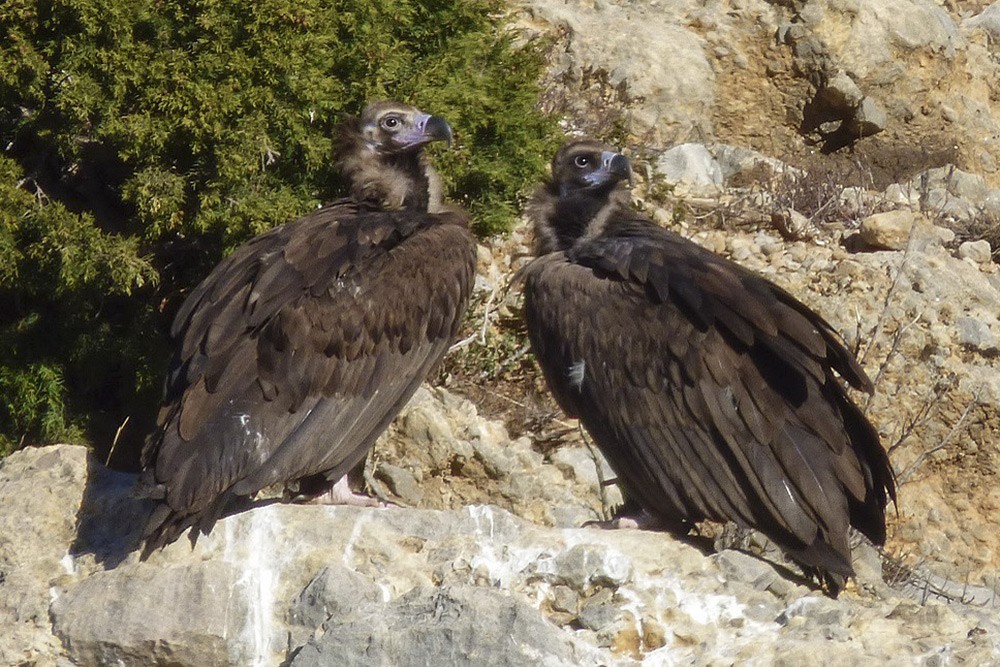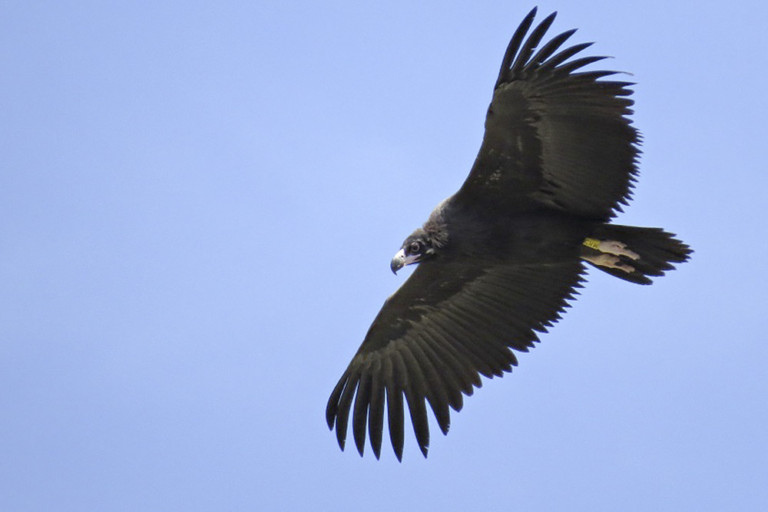The breeding season in the Pyrenees has begun with 14 pairs formed and 11 of them incubating.
A year more, ten years from the beginning of the project, the Catalonian Pyrenees colony of black vulture (placed in National Hunting Reserve of Boumort) has been launched. It was at the end o january when the pairs started breeding and we hope that knew chicks will born in the next days of april.

A female of black vulture (Aegypius monachus) of the catalonian colony with her chick in the nest. © Jordi Bas
Fourteen pairs have begun breeding in this 2017 season, but, as usual in the breeding process of black vulture, not all the pairs do it succesfully, not even experienced pairs. In this way, only eight of them continue in the breeding process. It is not discarded the possibility of some of the pairs who have no succes in the process start breeding again like the recently three pairs formed.
In this season, and as has happened in last seasons, not all the pairs with experience breed succesfully. In 2017, eight pairs of black vulture have experience (five of them breed succesfully a chick in last seasons) and another three have lack of experience. On of this three is breeding, in spite of it has been recently formed.
Now we only have to wait the births in the next month and dream of overcoming the record number of the last year with more than 6 chicks birth and flow!
To learn more about the project, you can visit the section Reintroduction of the black vulture (Aegypius monachus) in the Pyrenees in this same web page.





